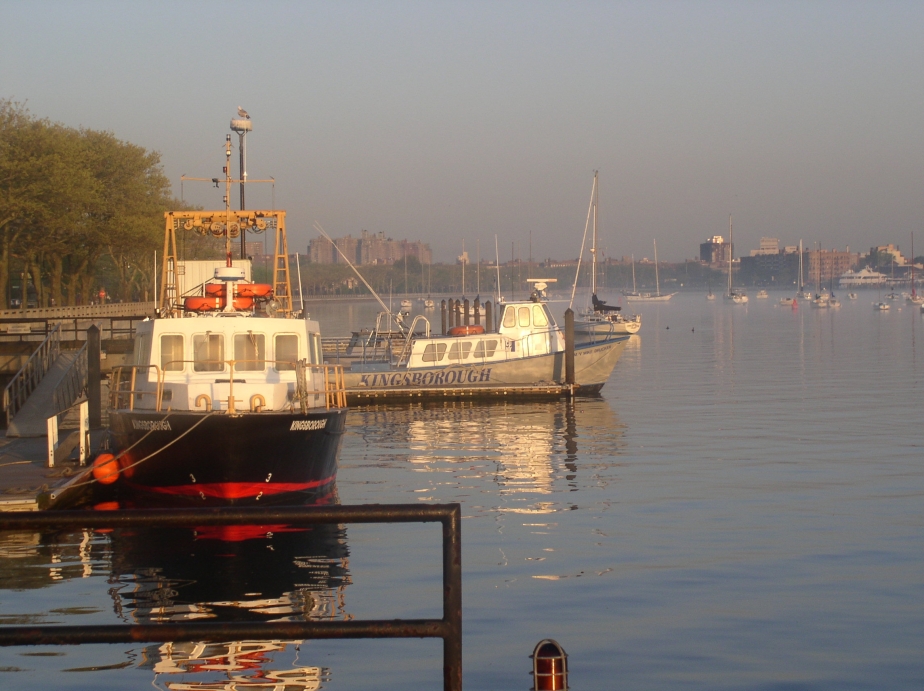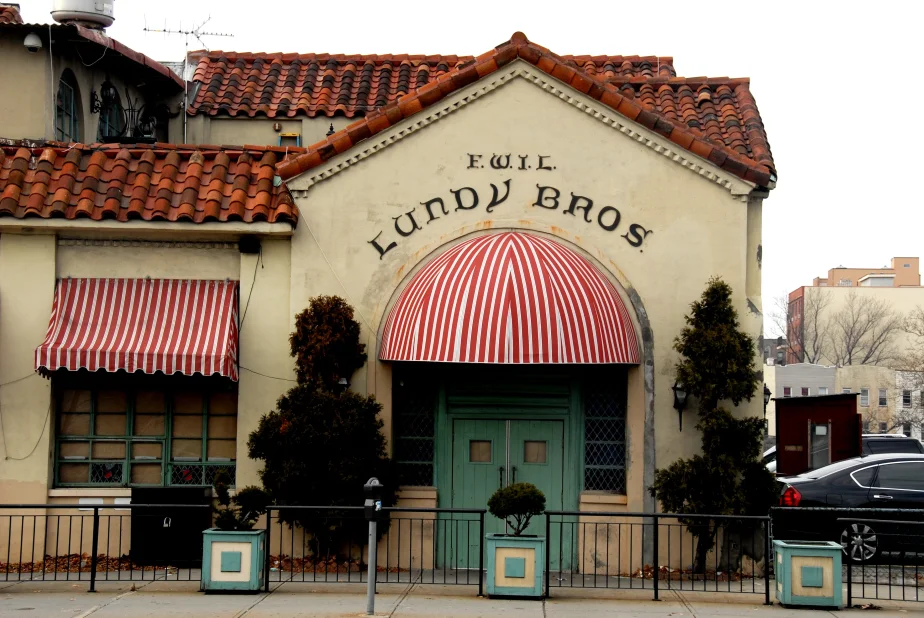
Lundy’s Restaurant in the Sheepshead Bay neighborhood of Brooklyn has seen its fair share of good and bad times since it opened in 1935. In its heyday, the restaurant reportedly seated over 2,000 patrons. Opened by Irving Lundy, the historic seafood restaurant operated from 1935-1977, and then again from 1997-2007. This photograph depicts the restaurant in 1961 at 1901 Emmons Avenue.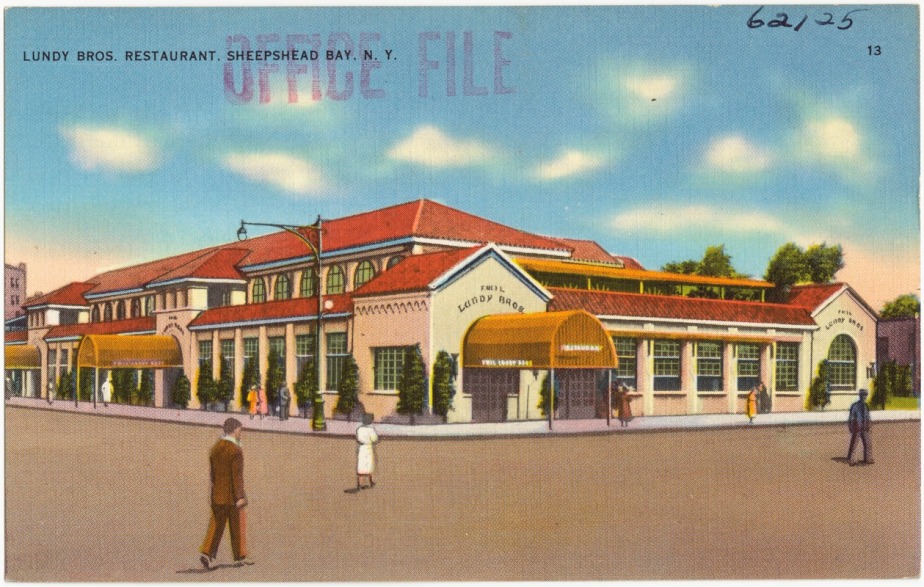
Irving Lundy was born in 1895, the oldest of seven children. Lundy came from a long line of fish sellers, his grandfather and great-uncles owned several fish stores and by the turn of the century, the family had an established reputation as renowned fish sellers. Within a three year span (1917-1920), Lundy’s parents died from illness, and then his brothers, Clayton and Stanley, died tragically in a boating accident.
By 1926, the first Lundy Brothers restaurant was built on stilts over a pier in Sheepshead Bay. The restaurant closed when the city made plans to revitalize the pier and build bulkheads. The restaurant on Emmons Avenue was built across the street and opened in 1935. They served heaping portions of fresh seafood—oysters, lobsters, and clams, as well as biscuits and fresh pies. Robert Cornfield, in his book Lundy’s: Reminiscences and Recipes from Brooklyn’s Legendary Restaurant, notes, “The resort feel of Lundy’s made it a weekend destination for those from other boroughs—there was the abundance of the Shore Dinner, the walk around the bay and across the wooden bridge to the beautifully landscaped streets of Manhattan Beach, the overarching sky over the narrows.”
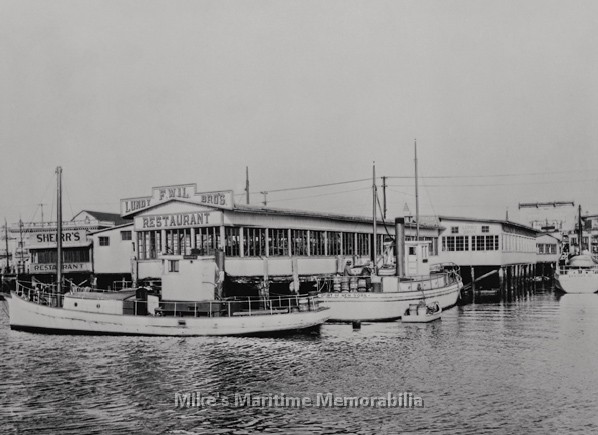
Despite great success and notoriety, Lundy and his restaurant faced many tragedies over the years: Lundy was kidnapped and robbed on numerous occasions, the restaurant was robbed by gunmen, his sister and brother-in-law were murdered, there were labor protests, and legal issues. Lundy died of a heart attack in 1977 and the restaurant closed shortly after. Two decades later, the restaurant was re-opened under new management, and closed permanently in 2007. Today, Lundy’s Landing Shopping Plaza has replaced the restaurant.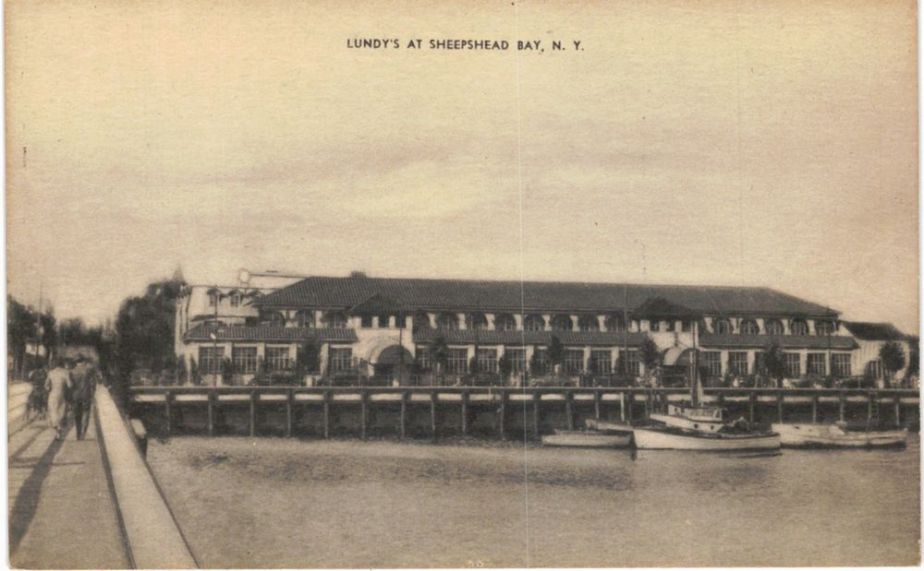
Lundy’s in Sheepshead Bay was the favorite restaurant of Mimi Sheraton’s family. The huge California mission-style establishment on Emmons Avenue was probably the most popular restaurant in all of Brooklyn. Sheraton’s fondest memories, however, were of the place as it was in her childhood in the late 1920s and early ’30s, a listing dining room in a small white house, one of many seafood shacks on the piers jutting over the water. She remembers snowy white linen tablecloths, huge rolled napkins and white coats worn by courtly, courteous black waiters. Her father would table hop or go up to the clam bar to schmooze with friends who gathered there. According to a story on the restaurant and its founder that ran in Newsday in 1989, Lundy’s served alcohol despite Prohibition which might account in part for its great success in that decade.
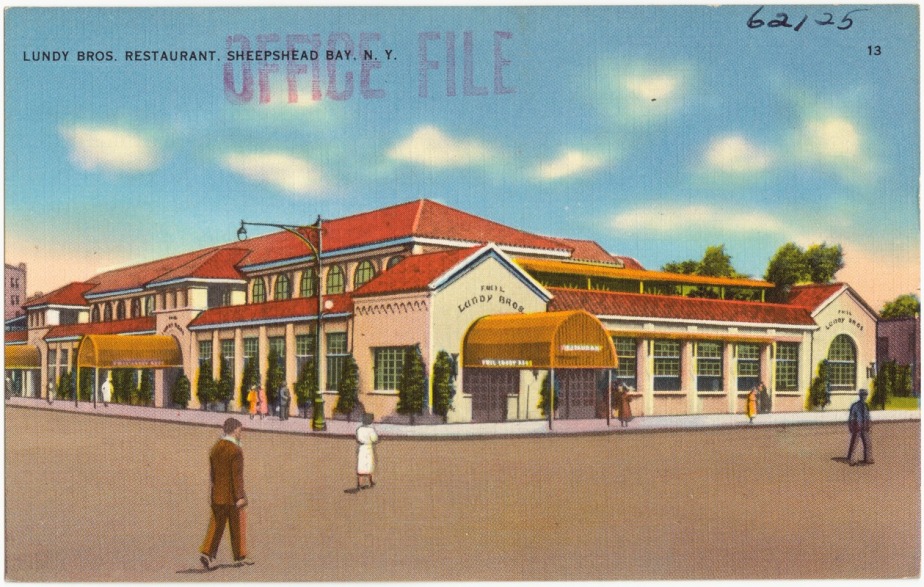
Sheepshead Bay had been a place to fish, duck hunt or buy fresh seafood since the mid-19th century. It had a racetrack back then. Big spenders and their families stayed at resort hotels or in stately Victorians on Millionaires Row. Villepigue’s and Tappen’s both still around in 1946, were the reigning seafood palaces in the olden days. By the 1920s, the racetrack and the millionaires had gone and Sheepshead Bay was largely an Irish, Italian and Jewish residential neighborhood.
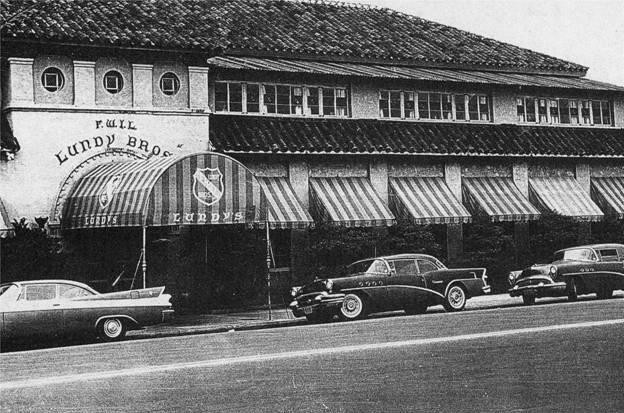
In the early 1930s all of the businesses on the piers, including Lundy’s, were forced to move when the WPA undertook a major renovation of the crumbling docks. In 1934 Irving Lundy reopened on the site of the old Bayside Hotel in a building that he intended to be the largest single structure restaurant in the world, . By then Lundy’s had become the place to go in Sheepshead Bay for a family Sunday dinner or to celebrate a special occasion. The new restaurant, inspired by the buildings Lundy had seen in California, occupied a city block, was two-stories high and sat 2,700 diners at a time.
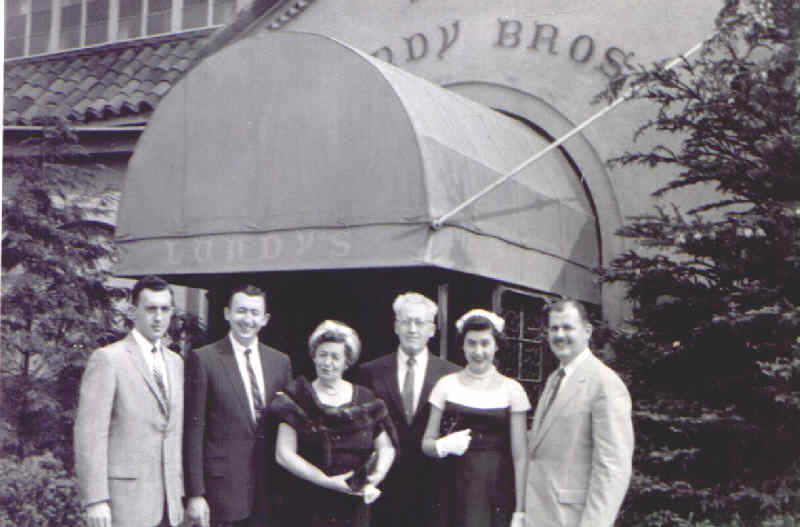
The roof was red tile, the walls sand-colored stucco. Lundy put his initials. F.W.I. L for Frederick William Irving Lundy, and the family coat of arms over the doorway. Lundy had the builders embed crushed clam shells into the cement for luck. The interior had arched ceilings, stained glass windows and wrought-iron grillwork. There were two kitchens, multiple dining areas, a patio, a clam bar, and a liquor bar. Men in pinstripe suits and ladies with hats and furs would jam the place at peak hours.. Lundy’s drew an ethnic cross-section of Brooklynites: Irish, Germans and Italians as well as the upwardly mobile Jews of Midwood, Flatbush and Borough Park.

There wasn’t much courtly or courteous about Lundy’s at its height of popularity. Elliot Willensky wrote of the roar of a thousand conversations and the sometimes interminable wait for service. Nick Viorst wrote that it was “an exercise in patience and intimidation.” The restaurant had no maitre d’s and took no reservations. People, who usually arrived in groups, elbowed their way through the crowded restaurant to find a table where the diners were eating dessert. They would hover and glare until the table was relinquished. Sometimes when a table was vacated, it would set off a mad scramble. At times fistfights broke out.
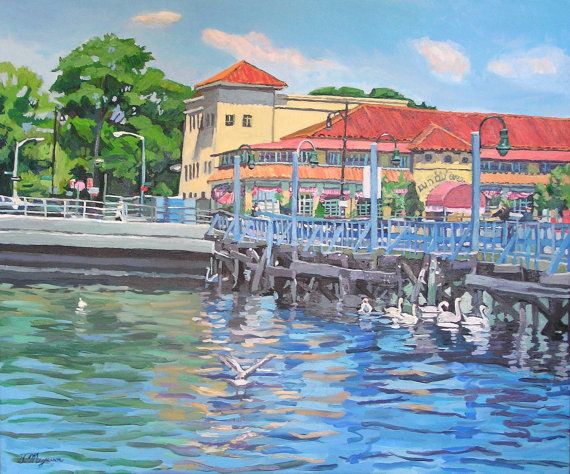
Getting a table was only half the battle. While Lundy instructed his waiters to develop a personal relationship with regulars like the Solomons, making them feel like big shots, it could be a different story for the occasional visitor, at least in later decades. After finally finding a table, the party might have a long wait before a waiter showed up with menus. When the waiter eventually got around to handing the diners the elaborate and somewhat unusual menu, he often would return before anyone had had a chance to study it.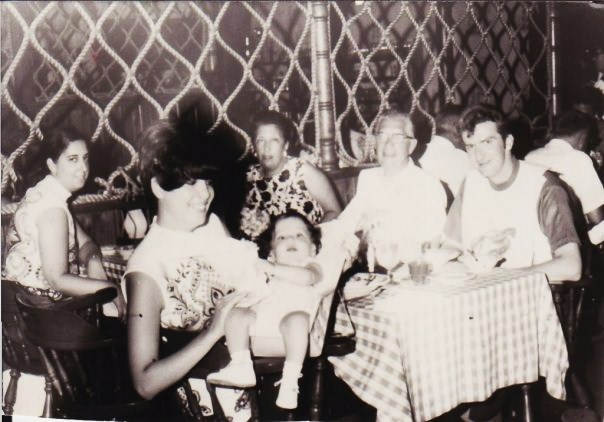
If the patrons weren’t ready to shout your order over the din, it might be a long time before they saw the waiter again. Then it might be another long wait before the food arrived. But most felt it was worth it. The food was fresh and arrived steaming hot and by all accounts it was excellent. The portions were generous, the prices reasonable. For all the complaints, the place had the festive atmosphere of a communal event with a certain ritual aspect such as the lobster bib, said to be a Lundy’s invention, fingerbowls at the end of the meal and the visit to the oyster bar to swallow raw littlenecks.
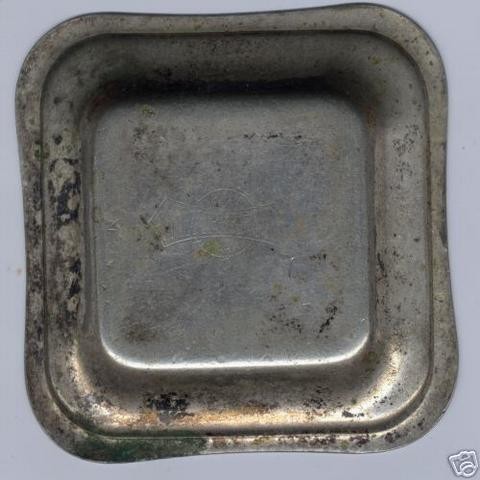
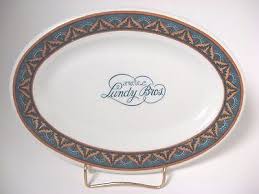
Lundy hired only African-American waiters and busboys well into the poswar era. At peak time he had 200 employees working the floor. Many of them formerly had worked as grooms at the racetrack or as Pullman porters. In the summer he brought in college students from Black colleges down south. Viorst noted that working at Lundy’s was a tough job for the waiters who had to keep track of many tables while transporting steaming hot trays of food through the massive, non air-conditioned dining rooms.
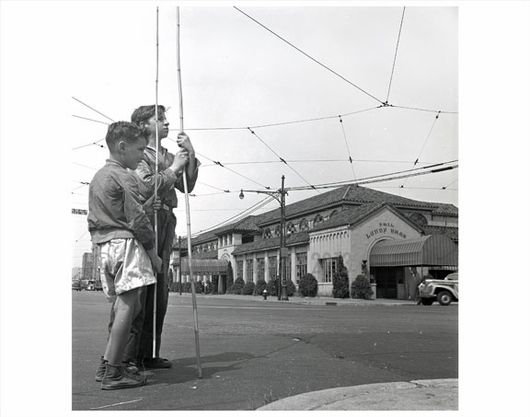
They sweated so much they changed their crisp white jackets several times during the course of a workday. Irving Lundy was a perfectionist and eccentric with a short fuse, Occasionally physical altercations took place in the kitchen between Lundy family members and their employees. He kept the unions out of his restaurant but he paid his employees well.

Like most patrons, the Solomons usually ordered the shore dinner, which was copied from Villepigues where it was said to have been first assembled for Diamond Jim Brady in the Gilded Age. It started with a choice of soup (usually the clam chowder), shrimp, clam, oyster or crab cocktail, followed by steamers that had been dunked in their own briny broth and then into melted butter, half a lobster with the meat picked from the shells, half a chicken, corn on the cob with more butter, and baskets of miniature, Southern-style flaky biscuits. Sheraton remembers the table holding bowls of slim French fries, relish dishes of cole slaw, and pitchers of iced tea. She insists that the well-remembered “blueberry pie” actually was huckleberry.
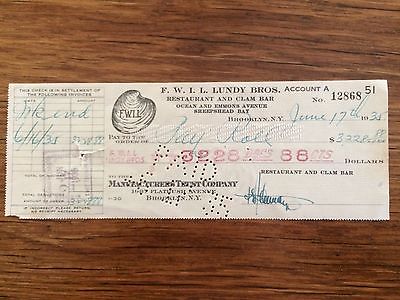
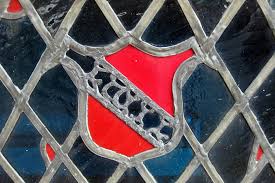
Sometimes the Solomons ordered watermelon instead of pie for dessert. If they were in the mood for “something different” the main course might be crab meat, lobster or shrimp au gratin under a golden brown cheese and cream sauce or a gold-pink sherry, egg and cream Newburg sauce. The Solomons loved Lundy’s so much that Joseph Solomon sometimes stopped in on his way home from work to pick up a basket of soft-shelled clams to bring home as a surprise for the family.
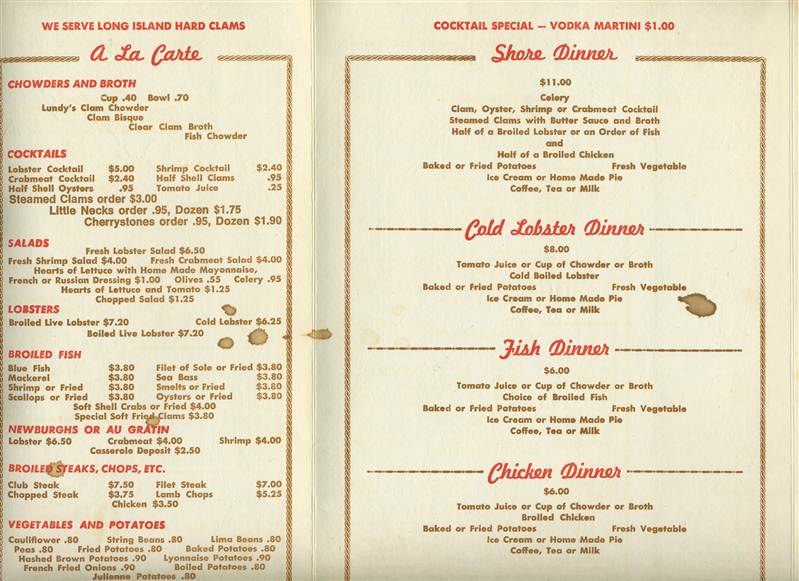
Frederick William Irving Lundy was an interesting transitional character in Brooklyn’s history who deserves a post of his own. By birth he was Old Brooklyn. His grandfather, also named Frederick, was brought to Brooklyn in 1838 as a 14-year-old orphan by the Van Nostrand family whose roots went back to New Amsterdam. While the Lundy family suspected they might be of Dutch and English origin, Frederick came to the US from Bremerhaven, Germany, which at the time of his birth was not yet a major port but an assemblage of small fishing villages scattered on the mudflats and islands near the mouth of the Weser River on the North Sea.
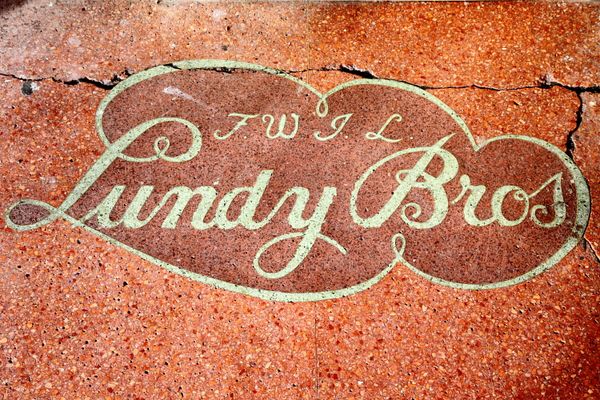
When the first Frederick Lundy started a fish business Brighton Beach and Manhattan Beach were the summer resort towns for Manhattan’s elite, sort of the mid-19th century Hamptons. The original Lundy Brothers were his five sons, including Irving’s father, Frederick Jr. By then Sheepshead Bay Racetrack, Brighton Beach Race Course and Gravesend Racetrack had made South Brooklyn the horse-racing capital of the country, patronized by the millionaire sportsmen of the Gilded Age and Gay Nineties. Lundy Brothers supplied fish to the hotels and restaurants that catered to this crowd.
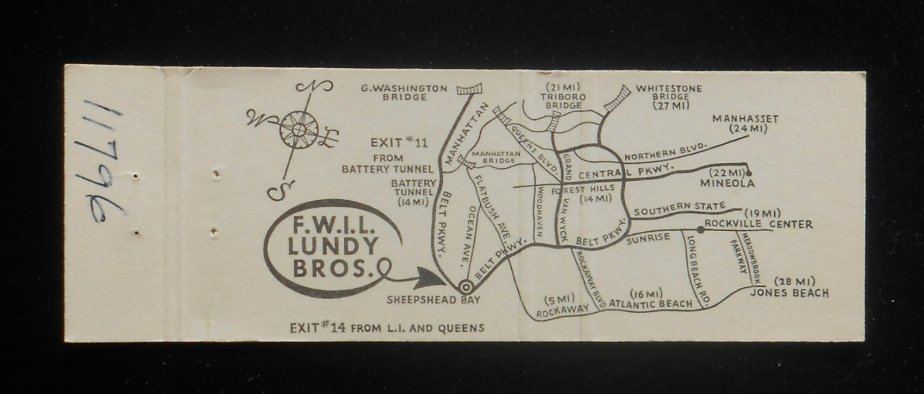 By 1880 they had three retail fish markets, their own clam beds, and a boat rental business in addition to their wholesale fish business. Frederick Jr. was active in the Democratic Party in Brooklyn and served as county registrar and tax commissioner. He married a judge’s daughter, bought up a lot of waterfront property in Sheepshead Bay and was recognized as one of Brooklyn’s leading citizens.
By 1880 they had three retail fish markets, their own clam beds, and a boat rental business in addition to their wholesale fish business. Frederick Jr. was active in the Democratic Party in Brooklyn and served as county registrar and tax commissioner. He married a judge’s daughter, bought up a lot of waterfront property in Sheepshead Bay and was recognized as one of Brooklyn’s leading citizens.
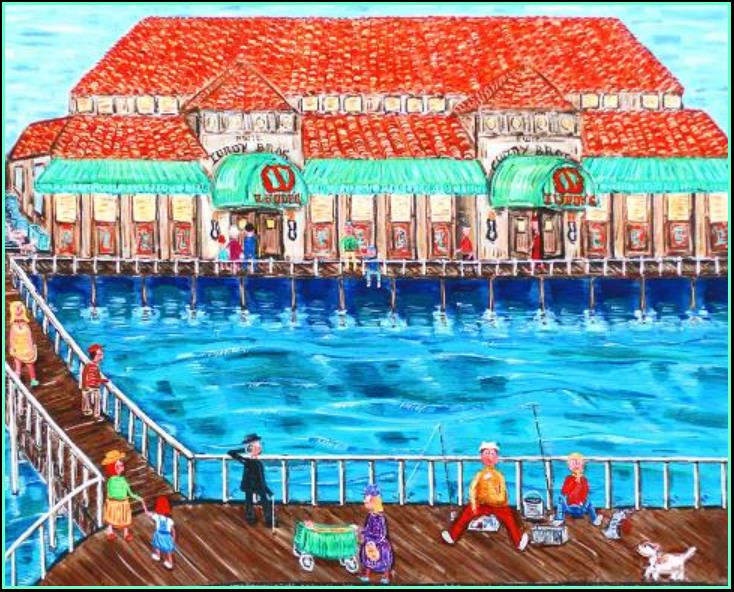
The affluent sporting crowd still frequented Sheepshead Bay in 1895 when Irving, as he preferred to be called, was born but with the closing of the racetracks the community went into decline. The red-haired, blue-eyed youngster started his first business, a chowder stand on the pier, when he was 9 years old. The business was booming when he went off to serve in the Navy during the First World War.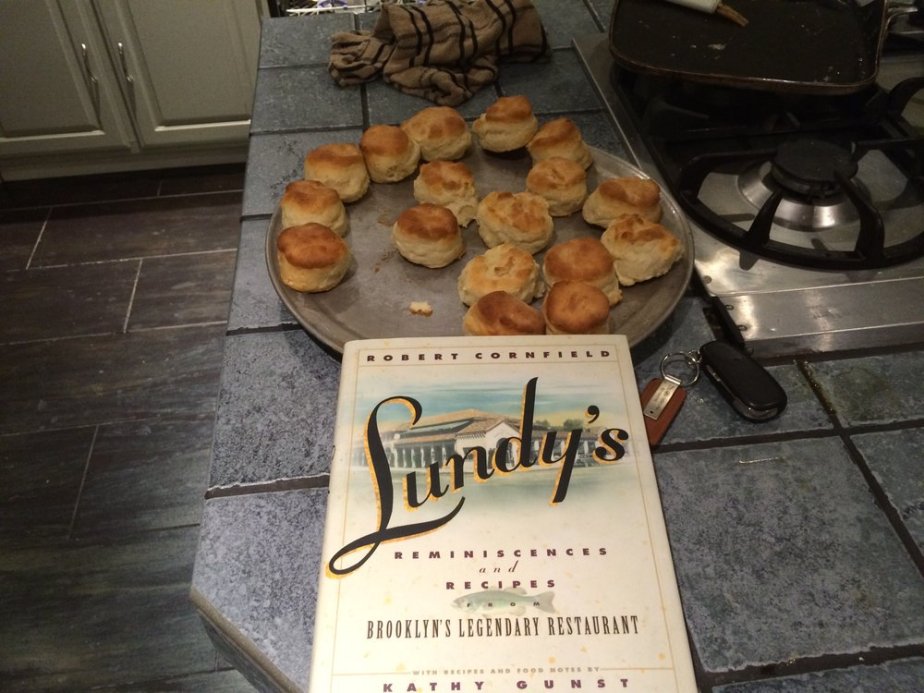
While he was away, his mother died in the great influenza pandemic of 1917. His father died a year later, making Irving the head of the family at 23. He opened a clam shack with his brothers who did much of the clamming while Irving oversaw the retail operation. In 1920 the rowboat carrying his three brothers and an employee back to their winter quarters on a mud flat in Jamaica Bay where they had an oyster bed was hit by an ice floe and sank.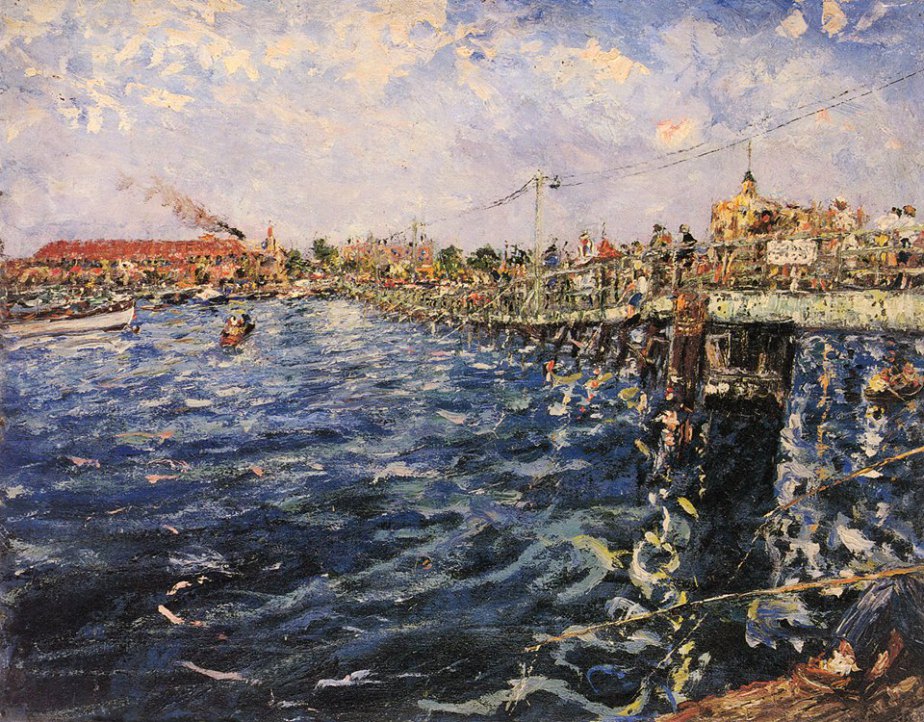
The youngest brother, 17-year old Stanley, was separated from the others in the thick fog and drowned. Twenty-one year old Clayton died trying to save him. Allen Lundy and his employee made it to the beach. Irving was devastated and filled the Methodist church the family attended with memorials. It is said he never again got in a boat or swam.

By the time he opened his first restaurant in 1926, Irving was already a millionaire. According to an 1989 Newsday feature story on Irving and his family, the Lundys were also rum runners. Allen would take his speedboat out beyond the territorial waters to meet the supply boat and then bring the contraband ashore, sometimes with the Coast Guard in pursuit, He once took a bullet in his thigh. The two brothers and their three sisters manned barricades along the piers with shotguns to keep out any competitors. They were one tough crew of Methodists.
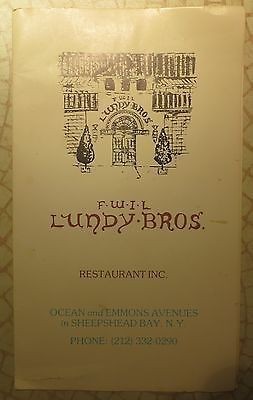
As a young man Irving was something of a man about town, palling around with Henry Ford and frequenting city nightclubs. He liked fine clothes and jewelry. Although he had a few flings with women as a young man, his closest relationship was with Henry Linker, his steadfast companion for over thirty years. Linker helped manage the restaurant. They lived together. They drove around town in an aquamarine Lincoln Zephyr with brown leather seats and frequented the Cotton Club in the early days. Irving never fully recovered when Linker died in the late 1950s.
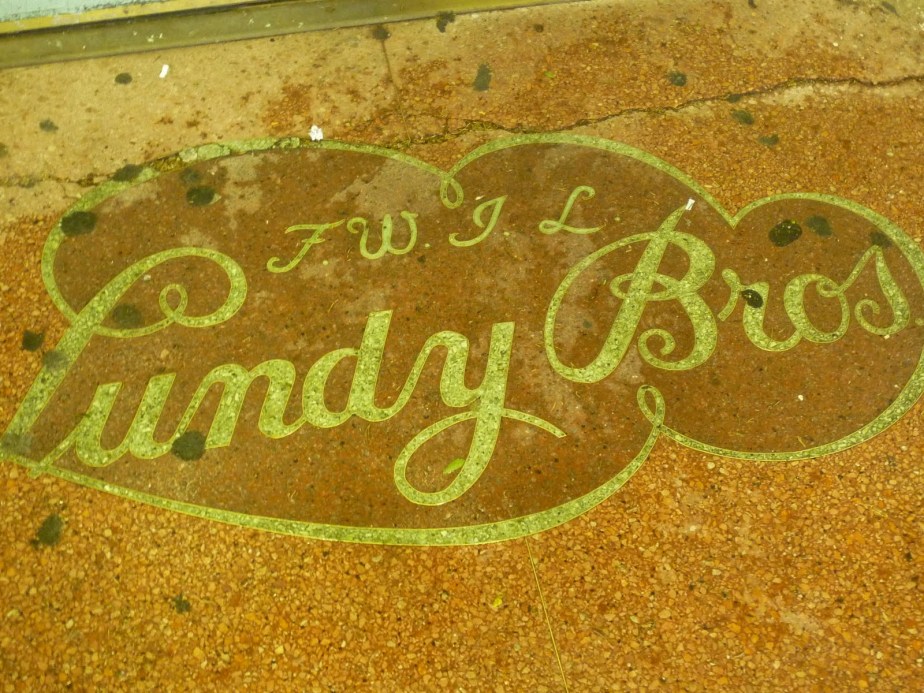
In 1926 a trio of thugs kidnapped Linker and Lundy as they were closing the restaurant. They were after the flashy diamond ring Irving often wore. He happened not to be wearing it that day and, when he refused to tell them where it was, they threatened to kill him. He stood his ground and the thieves satisfied themselves with his diamond stickpin and four thousand dollars from the restaurant safe. They left Linker and Lundy with enough money for cab fare home after telling them how much they enjoyed eating in their restaurant. They eventually were apprehended and sentenced to life in prison.
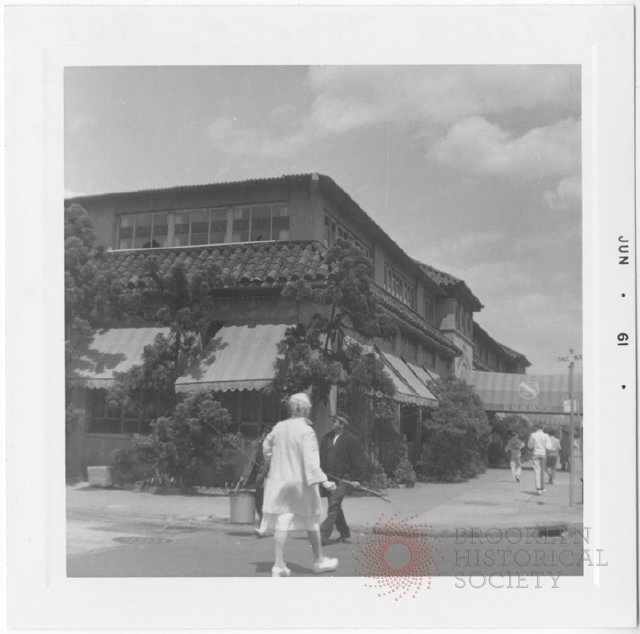
After the incident Lundy became more socially reclusive and suspicious of strangers. Allen was the brother who most often dealt with the restaurant customers after that although Irving was very much in charge. Later his nephews joined the business. Irving and Linker spent much of their free time at his estate in the Catskills, which eventually grew to 30,000 acres. Linker was a pilot and flew them up. Irving imagined himself a rancher often dressing in Stetson, cowboy boots and western clothes when he worked the land or oversaw his herd of Angus cattle. He also had two estates on Long Island, including one in Brookville that had belonged to a Vanderbilt. In town he now usually wore a threadbare camel hair coat and fedora.
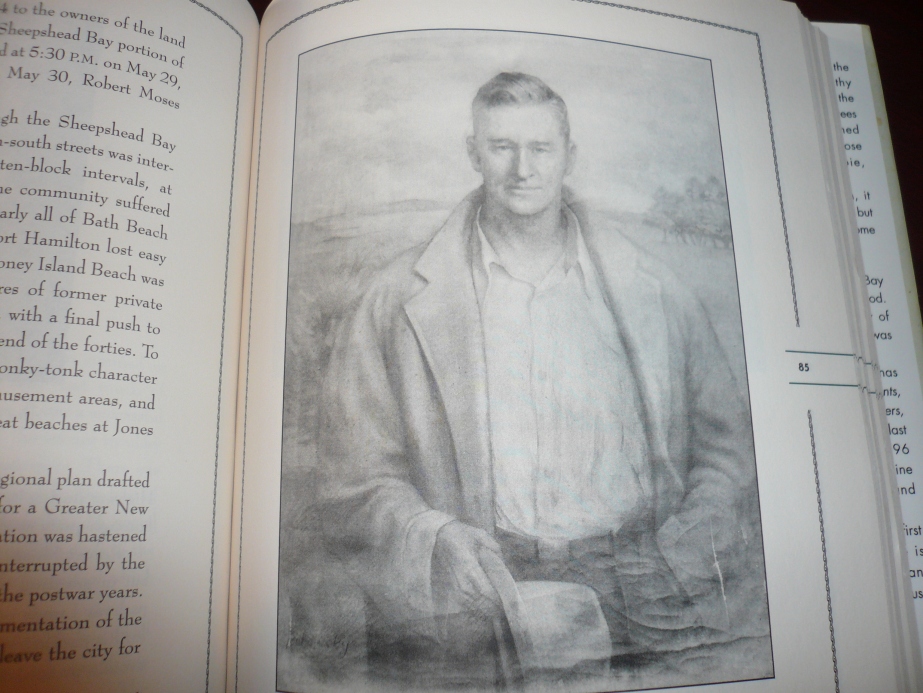
The WPA renovation of the Sheepshead Bay waterfront was a disaster for most of the small businesses on the pier but an opportunity for Irving who made his mammoth new showplace the centerpiece of a reborn Sheepshead Bay reinvented as a place for Brooklyn’s emerging middle class. He and Linker lived in an adjacent house. During the ’30s and ’40s he bought up much of the property along the waterfront that he had not already inherited. But he missed the old “Clam Coast” destroyed by the renovation and was said to be a benevolent landlord to the businesses that remained and a frequent anonymous benefactor to individuals and families from the old days.
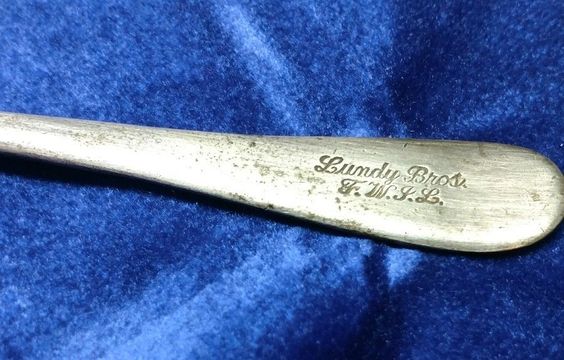
His political connections as well as those of his loyal patrons stopped the feds from permanently closing the new restaurant in 1935 for liquor violations. He was also one of the few to win a battle against Robert Moses who was ramming the Belt Parkway through the seaside communities in the 1930s.
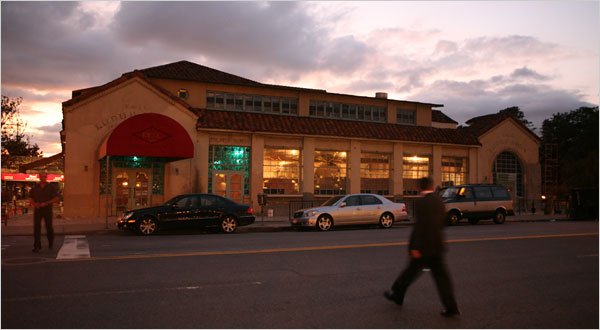
Irving Lundy was not only a product of Old Brooklyn and the founder of a beloved institution of the New Brooklyn of the mid-twentieth century, but also a tragic victim of the borough’s disintegration in the 1970s. He had become almost a total recluse after Linker’s death, living in an apartment over the restaurant with a pack of Irish setters.
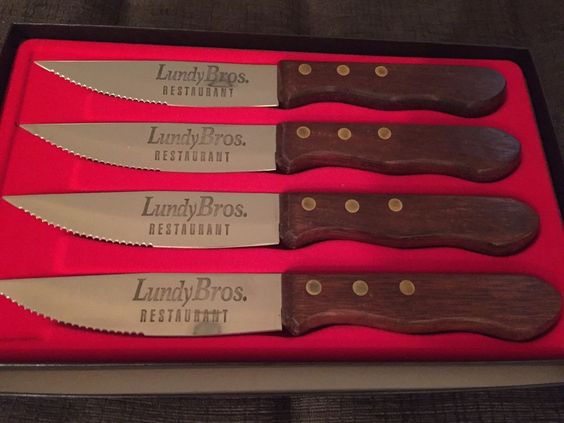
The almost unbelievably horrific and violent story of the final decade of his life and of his restaurant, including the murder of his sister and brother-in-law, his betrayal by his closest associate and the suspicious circumstances of his own death, is a tragic end to a great storied life.
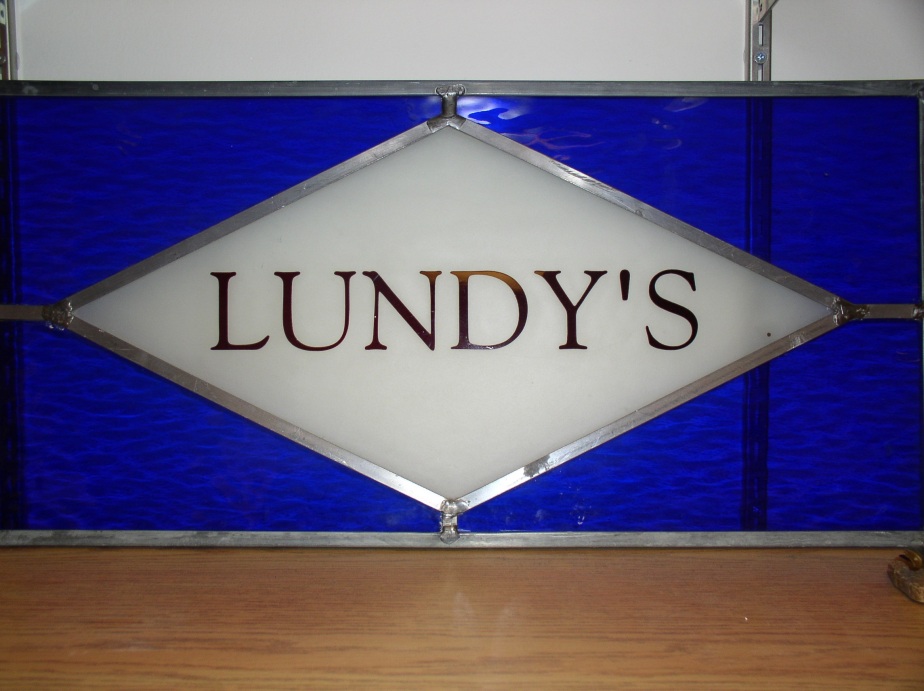
From a reader:
Lundy’s
1901 Emmons Avenue, Sheepshead Bay — Lundy’s was the city’s most humongous — and one of the best — seafood restaurants. It could seat 2,800 patrons at once, making it the largest dining establishment in the country. Occupying an entire city block, the structure still stands today, a two-story building with unusual Spanish architectural flourishes, poised on the concrete lip of Sheepshead Bay. Favorite dishes included raw clams on the half shell, small buttered biscuits, tomato salads, corn on the cob, shore dinner, Manhattan clam chowder, and huckleberry pie served with Breyers ice cream.
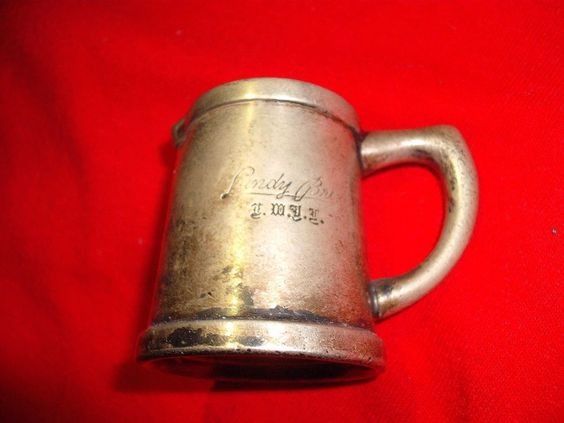
The place evolved out of a clam bar that opened in 1907; the current premises dates to 1934. It closed in 1977, only to reopen in 1995, filling only half of its former floorspace, and persisted for an additional decade or so. Now an upscale food market occupies the space.
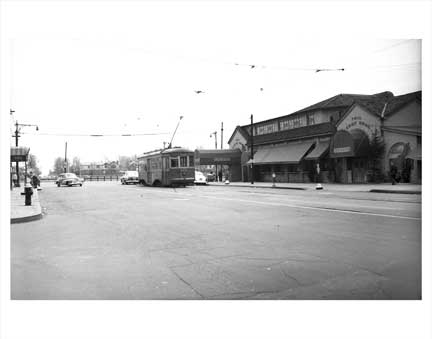
Lundy’s Angry Lobster
Recipe Ingredients
3 cloves roasted garlic
1/2 ounce chopped garlic
2 ounces white wine
1 rosemary sprig
1 pound lobster, cut into 6 pieces
3 ounces clam juice
1/2 teaspoon crushed pepper
1/4 ounce dried oregano
1/2 tablespoon butter
1/2 ounce chiffonade basil
8 ounces linguini
1/2 ounce chopped parsley
Salt and pepper
Method
Place sauté pan in oven to heat. When hot, add lobster and put back in oven for 3 minutes. Add garlic, dried oregano and red pepper. When garlic is lightly caramelized, deglaze with white wine and clam juice. Season, then place back in oven.
Finish lobster sauce with butter.
Heat pasta in boiling water for 1 minute, strain and place in fresh sauté pan.
Arrange lobster putting body back together. Pour sauce over all and garnish with rosemary and chiffonade basil.
Chopped Parsley – 6 bunches = 12 ounces chopped
Soak parsley in ice water. Remove and shake off excess water. Gather leaves together and twist. Julienne from top until you reach edge of stems. Dice until fine. Put wet towel and rinse. Let dry slightly. Store in refrigerator.
Cook Pasta – 1 pound = 3 portions
Place pasta in salted boiling water for 7-9 minutes or until al dente. Shock in ice water to stop cooking. Toss with blended olive oil to coat and prevent sticking.
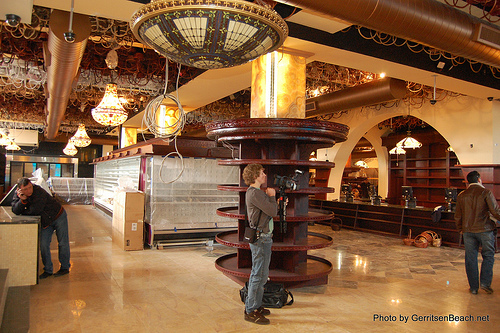
Sources dor this post and the next:
From My Mother’s Kitchen by Mimi Sheraton
Eating My Words by Mimi Sheraton
“The Once and Future Lundy’s” by Nick Viorst in Brooklyn A State of Mind, Michael Robbins & Wendy Palitz, editors.
When Brooklyn Was the World by Eliot Willensky
Wikipedia article
It Happened in Brooklyn: An Oral History of Growing Up in the Borough in the 1940s, 1950s, and 1960s by Myrna and Harvey Frommer
“Historically Speaking: Lundy’s a Fishy Tale” by John Manbeck, Brooklyn Daily Eagle, March 8, 2007
“Lundy’s Again Center of Attention: Restaurant a Focus of Controversy” by Alexis Jetter, Newsday, February 9, 1989
“A Mistrust of Strangers: The Haunted Days of Irving Lundy,” by Annelise Orleck and Alexis Jetter, Newsday,September 24, 1989
Arthur Schwartz’s New York City Food: An Opinionated History and More Than 100 Legendary Recipes by Arthur Schwartz
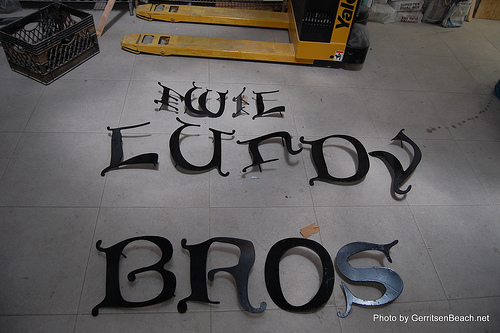
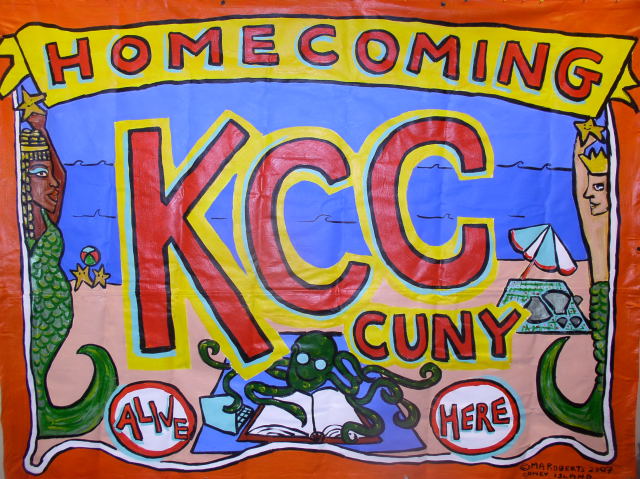

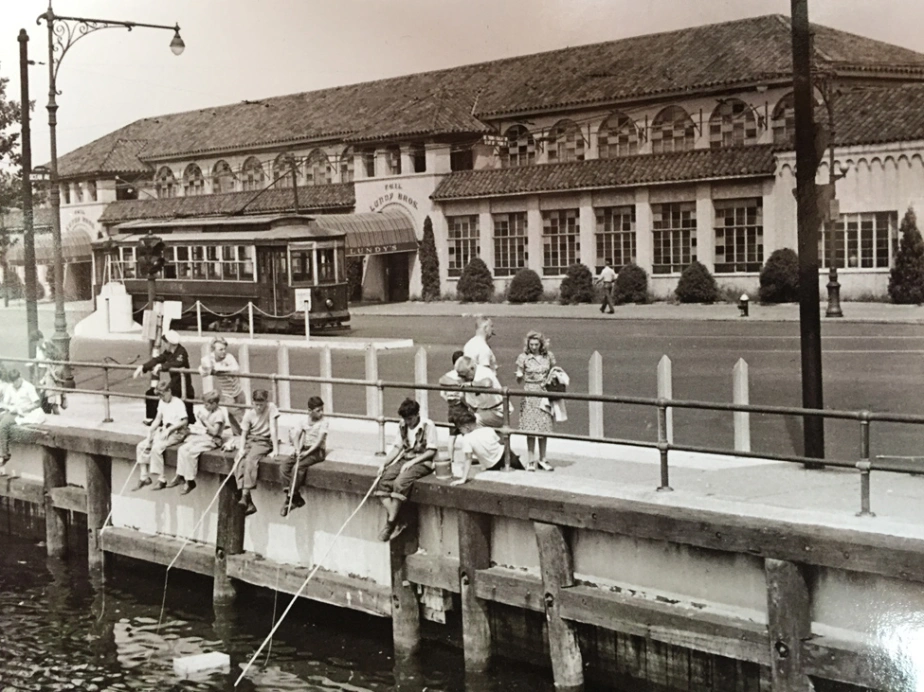



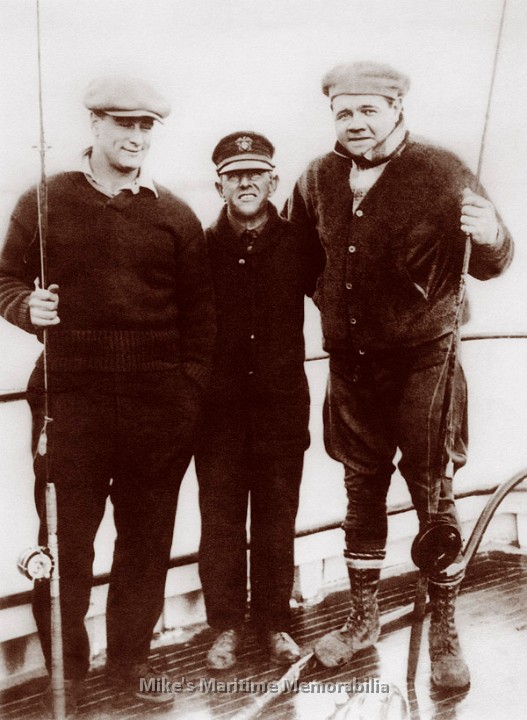 ,
,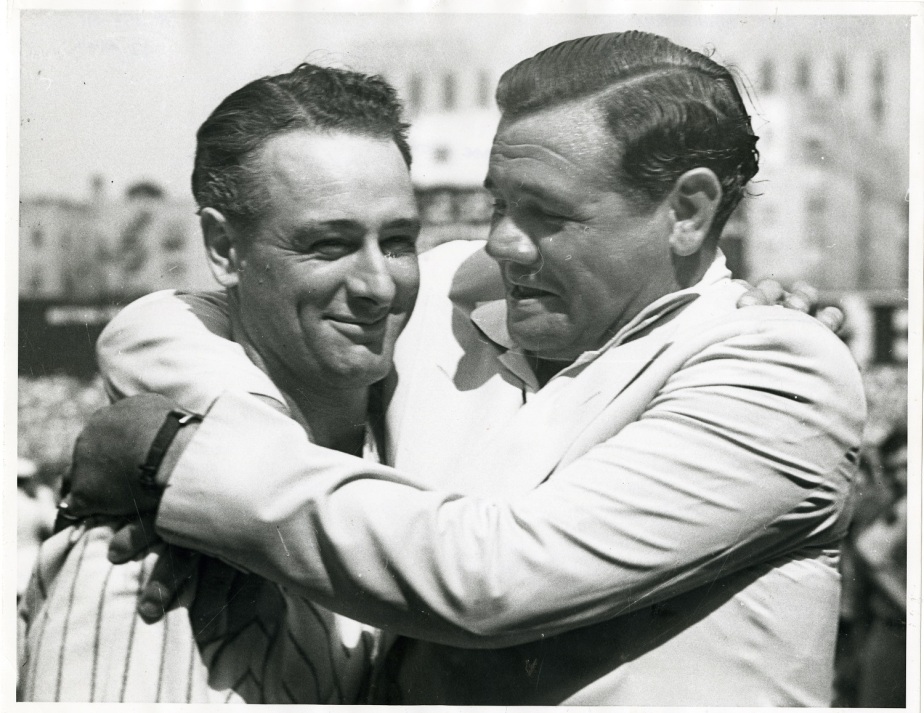
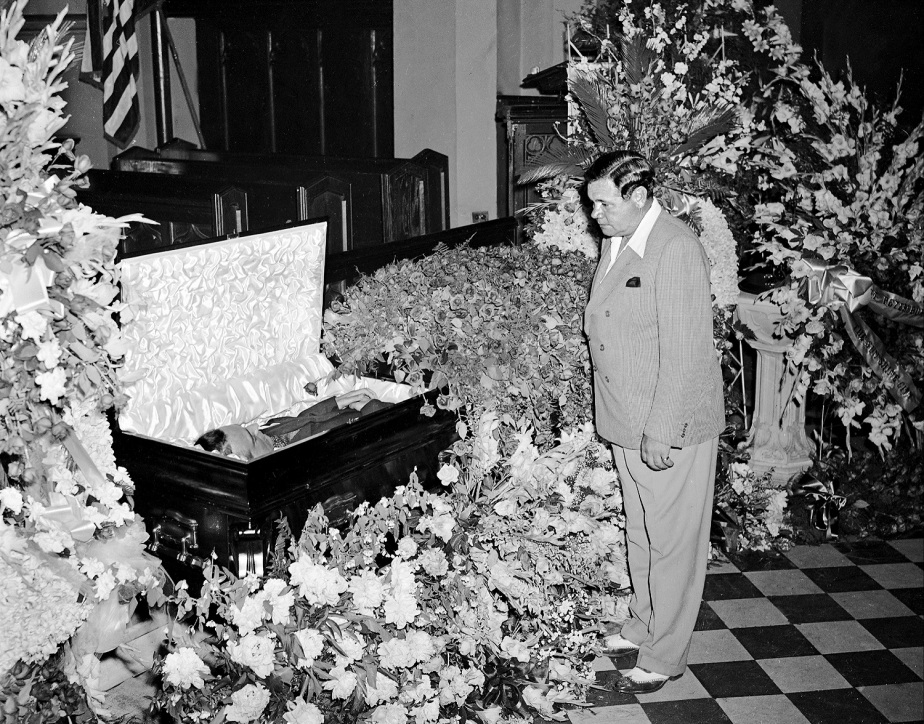
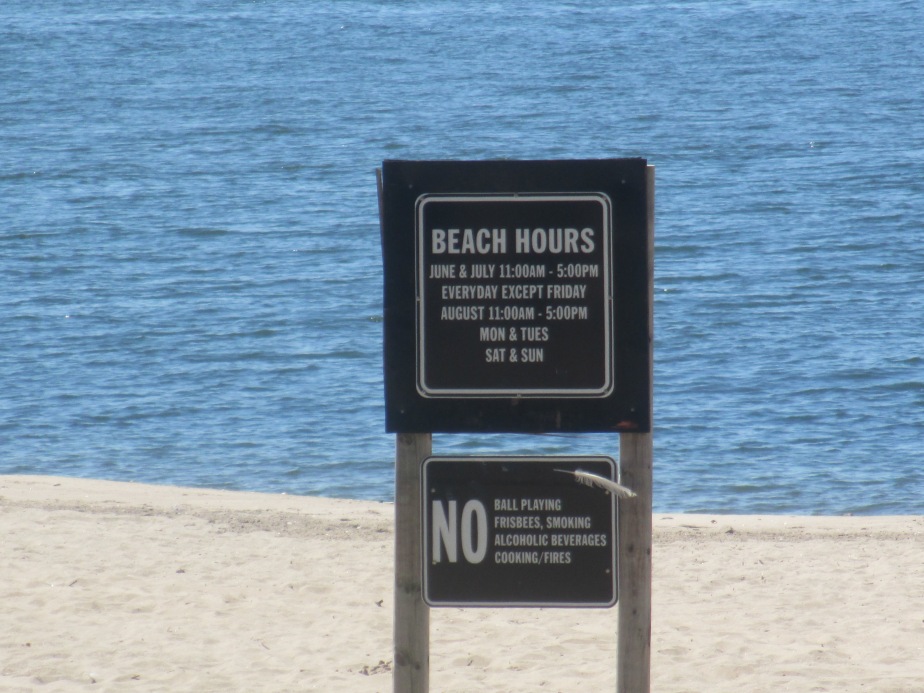
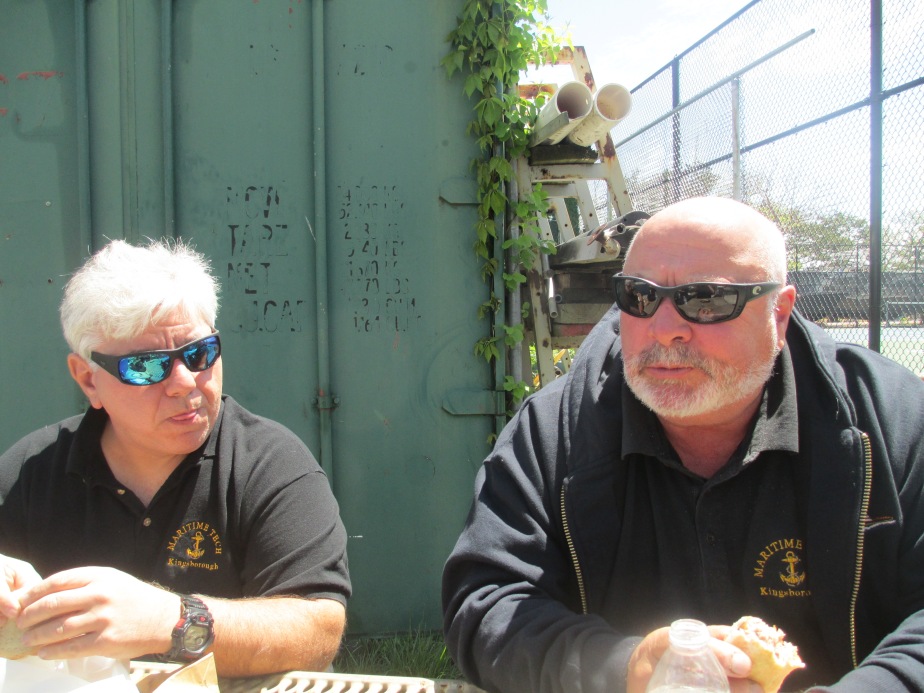
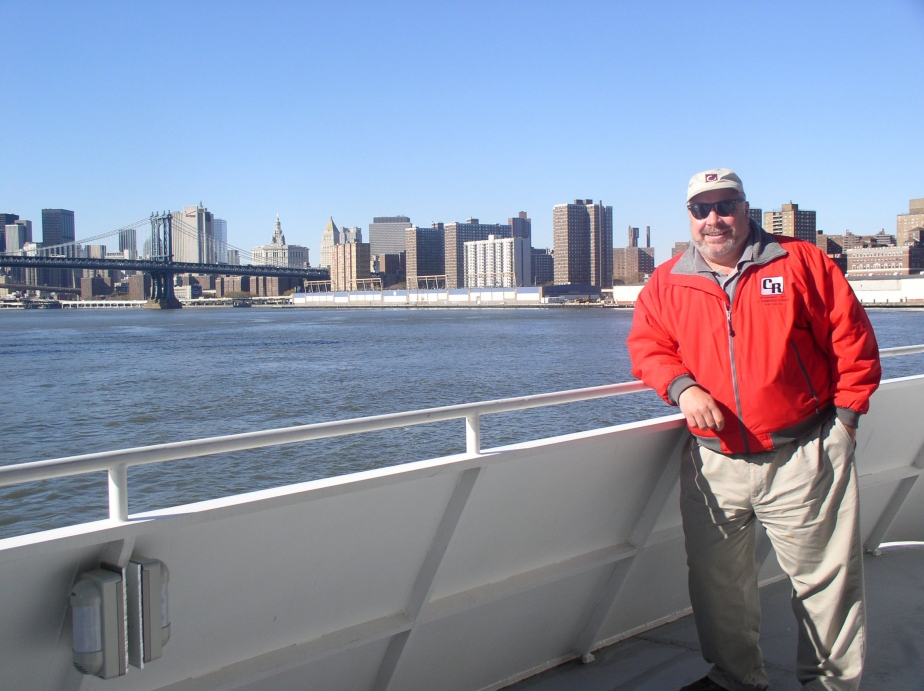
![nyc-stripers-grab[1]](https://kingsboroughblog.files.wordpress.com/2016/08/nyc-stripers-grab1.jpg?w=924)
![25[1]](https://kingsboroughblog.files.wordpress.com/2016/08/251.jpg?w=924)
![DSC_4891_web[1]](https://kingsboroughblog.files.wordpress.com/2016/08/dsc_4891_web1.jpg?w=924)
![17065757613_b382f42be2_b[1]](https://kingsboroughblog.files.wordpress.com/2016/08/17065757613_b382f42be2_b1.jpg?w=924)



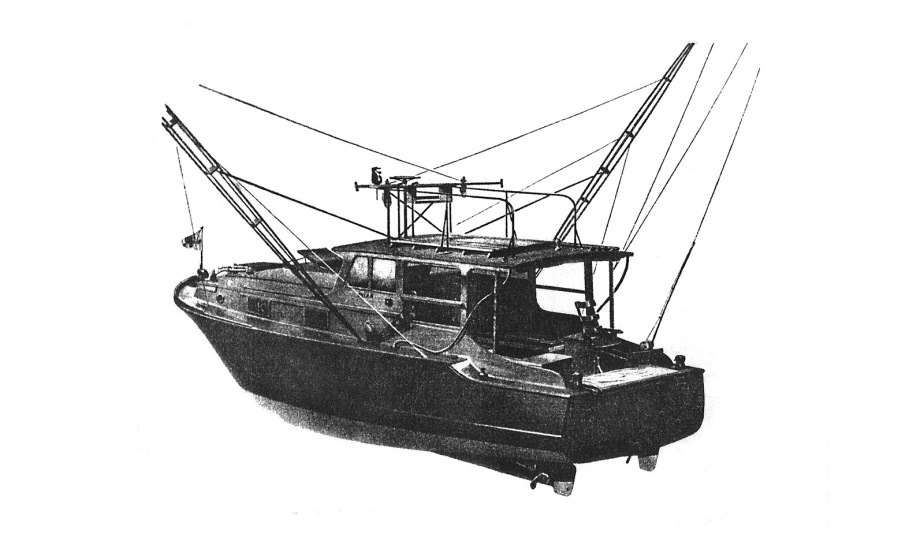
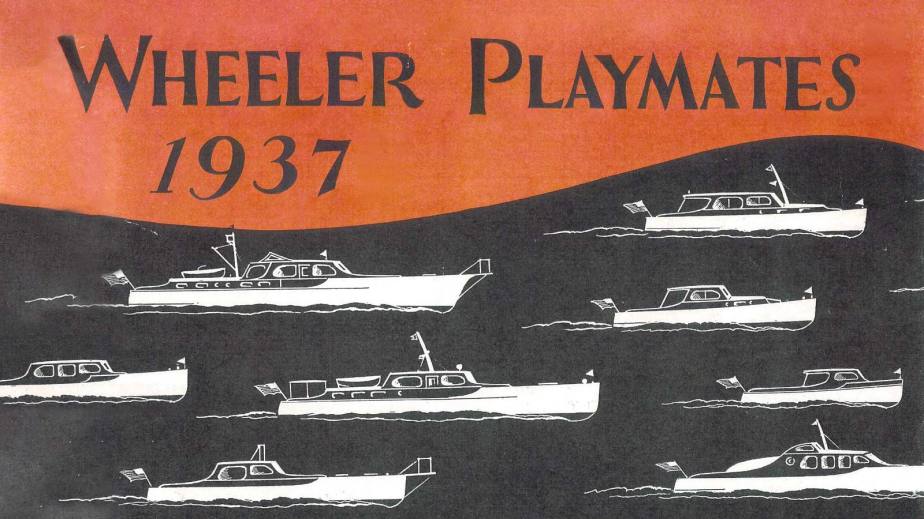

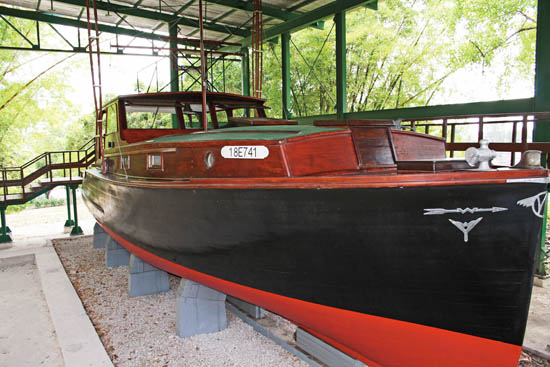
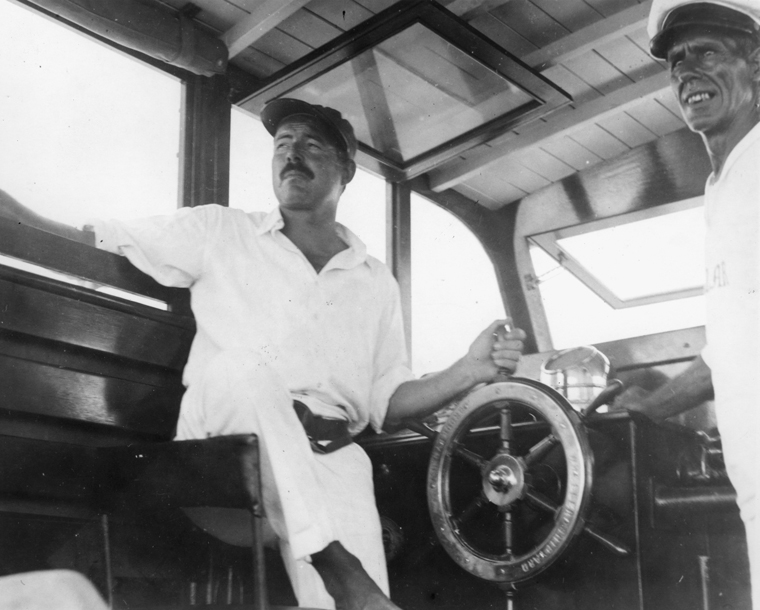
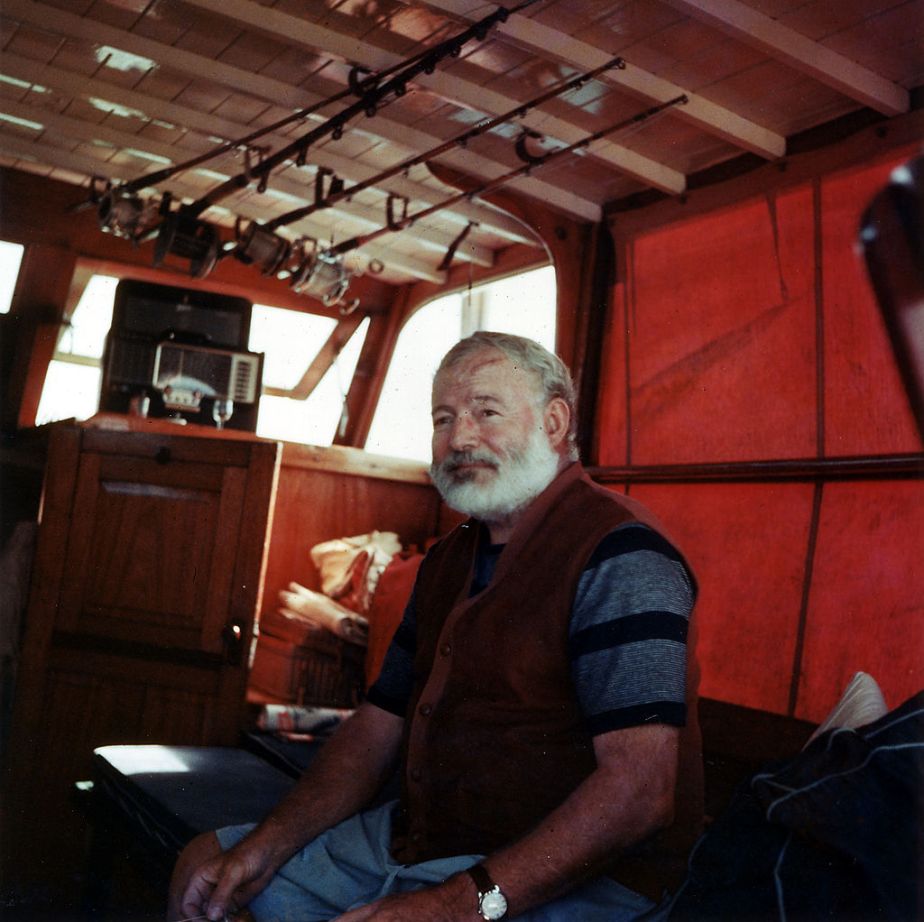
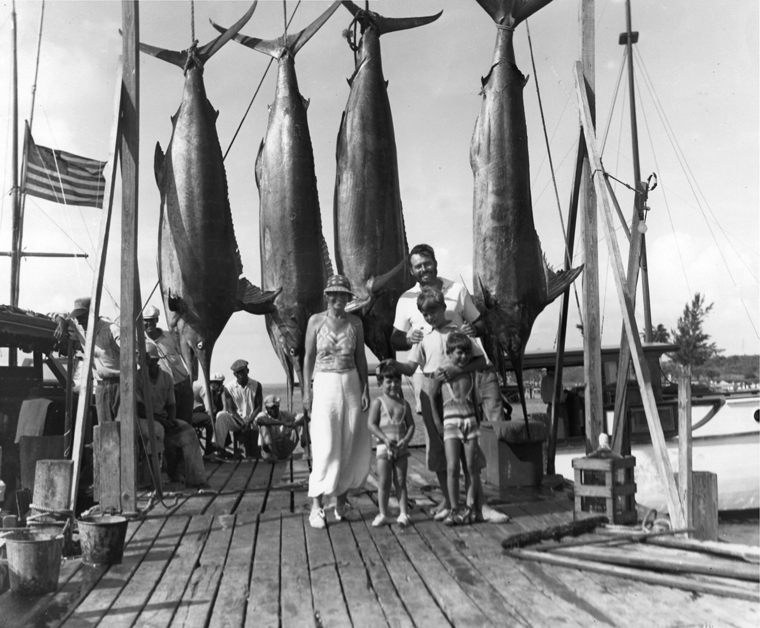
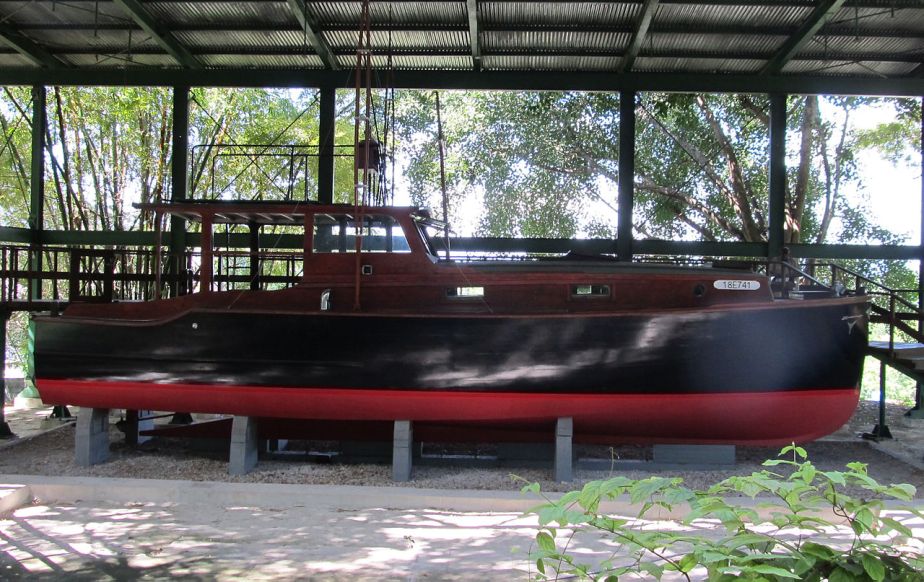
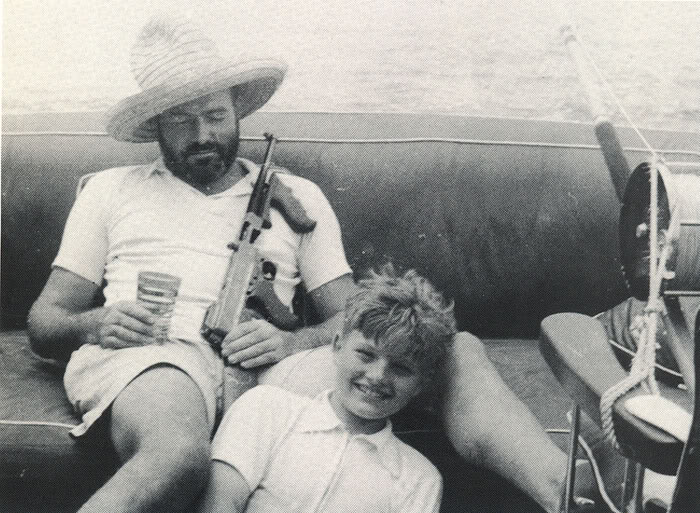
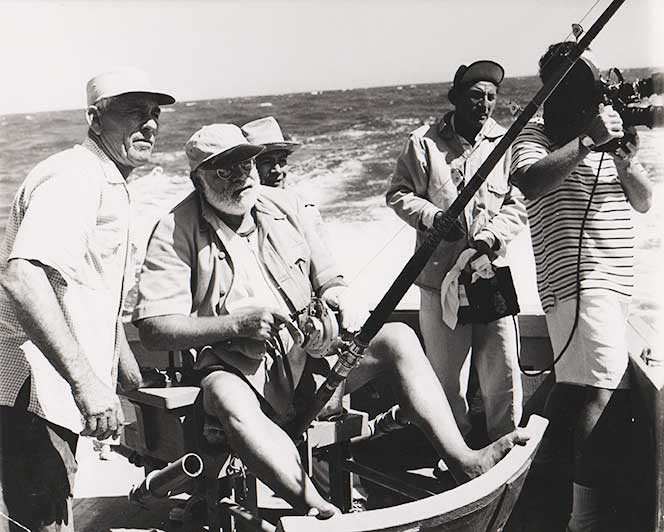
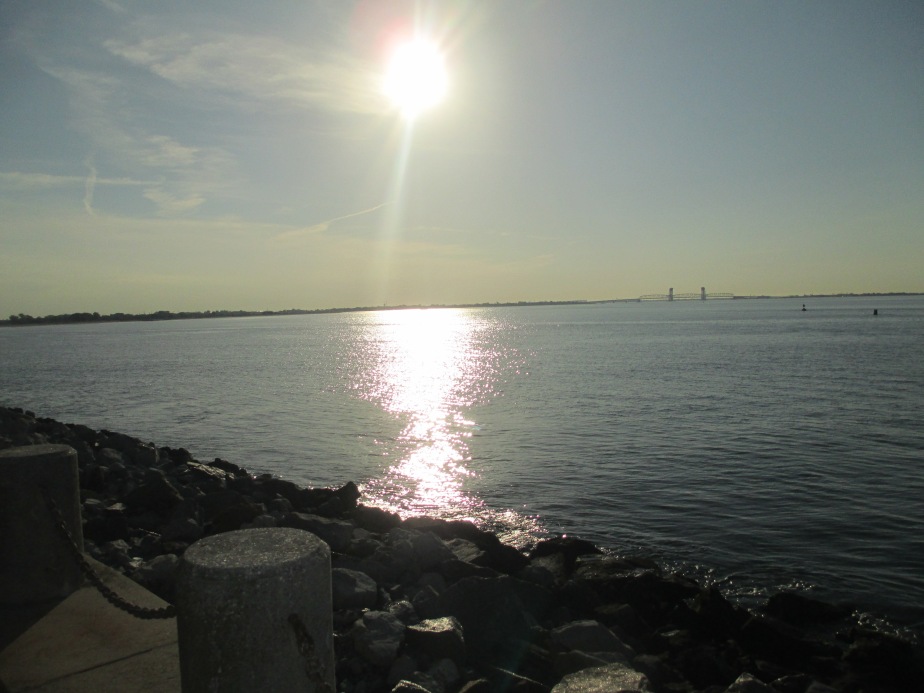
![13226724_10154190371709841_5152865560033426461_n[1]](https://kingsboroughblog.files.wordpress.com/2016/05/13226724_10154190371709841_5152865560033426461_n1.jpg?w=924)
